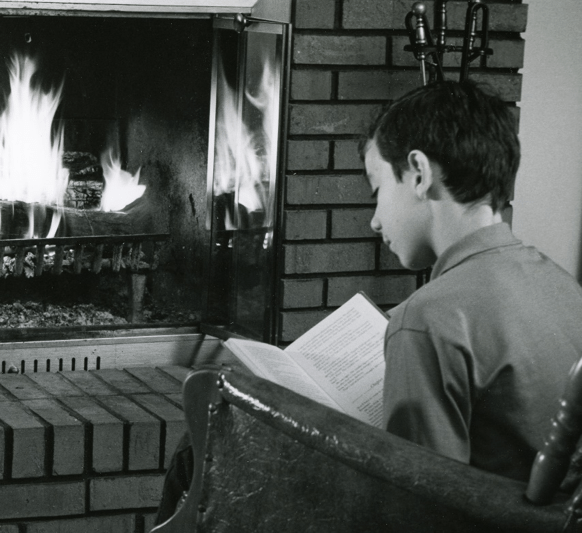If you are the primary caregiver of a young child, then here’s a question for you: when was the last time you talked to your little one about fireplace safety?
These days, many children learn basic fire prevention techniques in school, and these lessons can be supplemented by information that’s readily available online. The information is so accessible, in fact, that the focus of today’s post is not going to be what you should say to your children about fireplace safety. Instead, we’d like to discuss how you should talk to your kids about fireplace safety:
Be serious, but don’t be grave.
First things first: when you’re having these conversations with your kids, the goal should not be to make them “afraid” of the fireplace. Yes, all children should have a healthy respect for fireplace safety, and they should understand that the fireplace (and any and all forms of fire) are not to be played with. But your children should also not be so terrified that they won’t go near the hearth or get extremely anxious every time you decide to build a fire. At the end of the day, a fireplace is similar to a hot water dispenser or a kitchen knife: potentially hazardous, but very helpful and convenient when used properly.

Acknowledge that fire isn’t the only threat.
Children should walk away from discussions about fire safety knowing that fire is dangerous, but that particular sentiment barely scratches the surface of the issue. This is especially true when you’re considering fireplace safety, as well. For example, do your kids know about the dangers of smoke inhalation? What about carbon monoxide? Do they understand that certain materials (like bedding, clothes, paper, etc.) can catch fire if they come in contact with very hot objects (like electronics or cooking pans)? Have you impressed upon them that fire pokers and similar implements are made of heavy, dense metal and therefore may cause serious injury if they’re used as pretend swords or lightsabers? Have you explained that hitting their head on a brick hearth may warrant a trip to the hospital, so they shouldn’t run around or climb on it?
Again, you’re not trying to terrorize your children with a long list of things that could, hypothetically, kill them or destroy their home. But they should also understand that fire safety is more complex than “Don’t touch open flames and don’t play with matches.”
Keep the lines of communication open.
Your children should be able to come to you with concerns they have about fire safety or the condition of your fireplace. Listen to their comments and give actual answers to any queries that they have—don’t just brush them off. Yes, kids sometimes ask silly questions (“If you put a balloon in the chimney, could you send a secret message to someone on the roof?”), but they can also be surprisingly observant (“Why do we have to get the chimney cleaned every year? Does it really get that dirty?”). If you answer their questions honestly and earnestly, they’re far more likely to understand that this a solemn subject. And if they feel like you’re taking them seriously, they’ll be more likely to speak up when they think that something is amiss (“Hey, the fireplace smells funny—kinda like rotten eggs. Is that normal?”).
Set a good example.
Kids learn by watching the adults in their lives, so it’s important that you model correct behavior outside of formal discussions and lectures. For example, you can talk until you’re blue in the face about the importance of smoke detectors, but if your response to a chirping detector is to grumble, curse, and ultimately just disconnect it instead of changing the battery and testing it, your speech won’t amount to much. Similarly, if you tell your kids not to burn foreign objects in the fireplace, but they catch you destroying old documents, trinkets, or photos in such a manner, then they’re going to think that this behavior is actually safe and acceptable. While your fireplace will inevitably have some rules that apply to kids and not adults (i.e., only adults may start fires), try to keep the double-standards to an absolute minimum.
■■■
Fireplace safety is usually not a very fascinating subject to discuss, and if your kids already consider themselves to be knowledgeable about it, then any further discussion can seem a bit redundant. Still, it’s a conversation worth having, and it’s definitely one worth having correctly. So, take your kids’ questions and concerns seriously, encourage them to speak up, and do your best to model good behavior. When all is said and done, your children may not understand exactly why your chimney should be professionally cleaned an inspected at least once a year. At the very least, though, they’ll understand that chimney and fireplace maintenance is no joke!
Photo courtesy of the Forest Service of the United States Department of Agriculture






